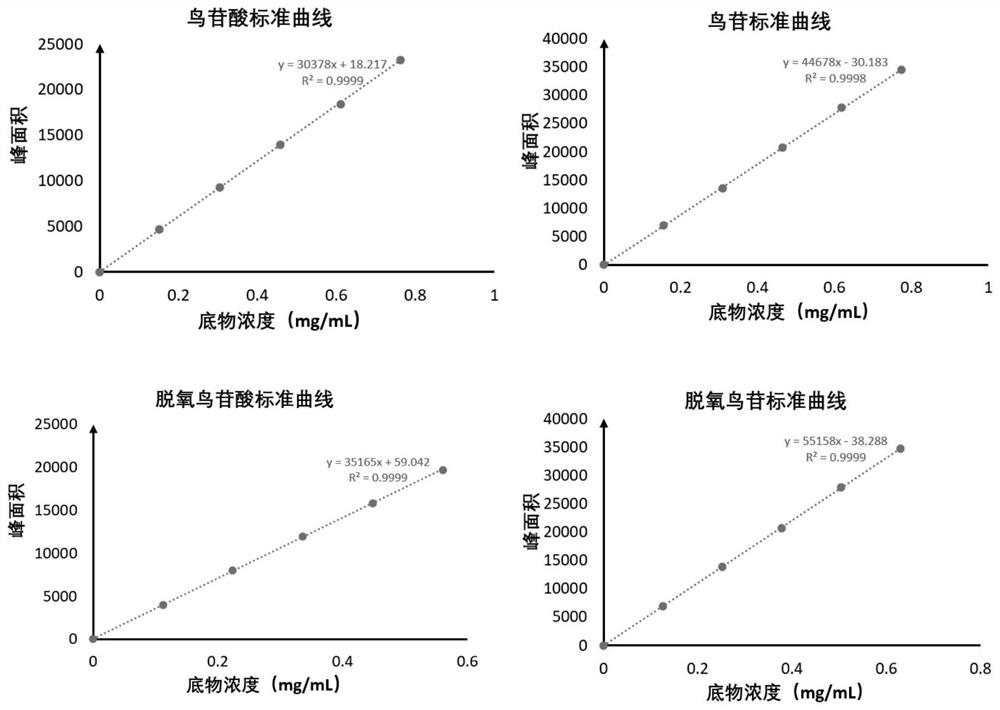Probiotic strain for reducing blood uric acid, composition and application of the probiotic strain
A technology of composition and blood uric acid, applied in the direction of application, microorganism, drug combination, etc., can solve the problems of indigestion and decomposition of purine precursors, probiotic strains have no effect, etc.
- Summary
- Abstract
- Description
- Claims
- Application Information
AI Technical Summary
Problems solved by technology
Method used
Image
Examples
Embodiment 1
[0036] Example 1: Screening of probiotics
[0037] The probiotic strains to be tested (including Lactobacillus rhamnosus, Lactobacillus helveticus, Lactobacillus casei, Lactobacillus reuteri, Lactobacillus plantarum, Lactobacillus acidophilus, Lactobacillus salivarius, Lactobacillus gravidarum) screened and preserved in this laboratory Bacillus, Lactobacillus fermentum and other 10 species belong to more than 130 strains of lactic acid bacteria probiotic strains, Bifidobacterium animalis, Bifidobacterium longum, Bifidobacterium infantis, Pediococcus lactis), were activated, inoculated into MRS medium for cultivation, at 37 Cultivate facultative anaerobic (standstill) or strict anaerobic (oxygen concentration 600 =2.7(1OD is about 2.0-3.0*10 8 CFU / ml), respectively added to the phosphate test buffer system (20mM, pH6.86) containing 0.7mg / mL adenylic acid, guanylic acid, inosine, adenosine, guanosine and inosine, the cells The final concentration is OD 600 = 0.6, incubated at ...
Embodiment 2
[0055] Example 2: Re-screening of the ability of probiotics to degrade purine precursors under nutrient conditions
[0056] The human intestinal tract is a nutrient-rich environment. Probiotics degrade purine nucleosides and nucleotides under non-nutritional conditions that only contain nucleosides and nucleotide substrates, and cannot guarantee degradation under rich nutrient conditions in the intestine Therefore, it is very important to select a screening condition that contains nutrients and does not affect the detection. After screening and optimization, the inventor has screened out a nutrient-containing test system that can ensure the growth of the bacteria and does not affect the detection. It consists of: 20mM phosphate; 0.2% glucose, 0.25% yeast powder and 0.2% ammonium sulfate , pH6.86. The dominant probiotic strains screened in Example 1 were re-screened in the above-mentioned test buffer containing nutrients. Adjust candidate strains to OD 600 It is 2.7, join in...
Embodiment 3
[0066] Example 3. Purine-reducing screening of candidate Lactobacillus depurines under different pH conditions
[0067] The human intestinal tract ranges from pH 5.5 in the duodenum to pH 7.5 in the large intestine. In order to screen probiotics that can degrade purine precursors throughout the intestinal tract, we selected the candidate Luo Lactobacillus eiferii was tested for purine reduction under the simulated human intestinal environment pH (5.0-7.5). Guanosine and adenosine were selected as substrates for testing. Since the main activity of KLR-3 and KLR-10 is to degrade nucleotides, their test substrates are guanylic acid and adenosic acid. The test results (Table 8) show that Lactobacillus reuteri KLR-1, KLR- 13 The activities of norguanosine and adenosine in different pH environments are relatively stable, and the activities of norguanosine and adenosine in Lactobacillus reuteri KLR-3 are relatively stable in different pH environments, while KLR-10 is relatively stab...
PUM
| Property | Measurement | Unit |
|---|---|---|
| hardness | aaaaa | aaaaa |
Abstract
Description
Claims
Application Information
 Login to View More
Login to View More - R&D
- Intellectual Property
- Life Sciences
- Materials
- Tech Scout
- Unparalleled Data Quality
- Higher Quality Content
- 60% Fewer Hallucinations
Browse by: Latest US Patents, China's latest patents, Technical Efficacy Thesaurus, Application Domain, Technology Topic, Popular Technical Reports.
© 2025 PatSnap. All rights reserved.Legal|Privacy policy|Modern Slavery Act Transparency Statement|Sitemap|About US| Contact US: help@patsnap.com



